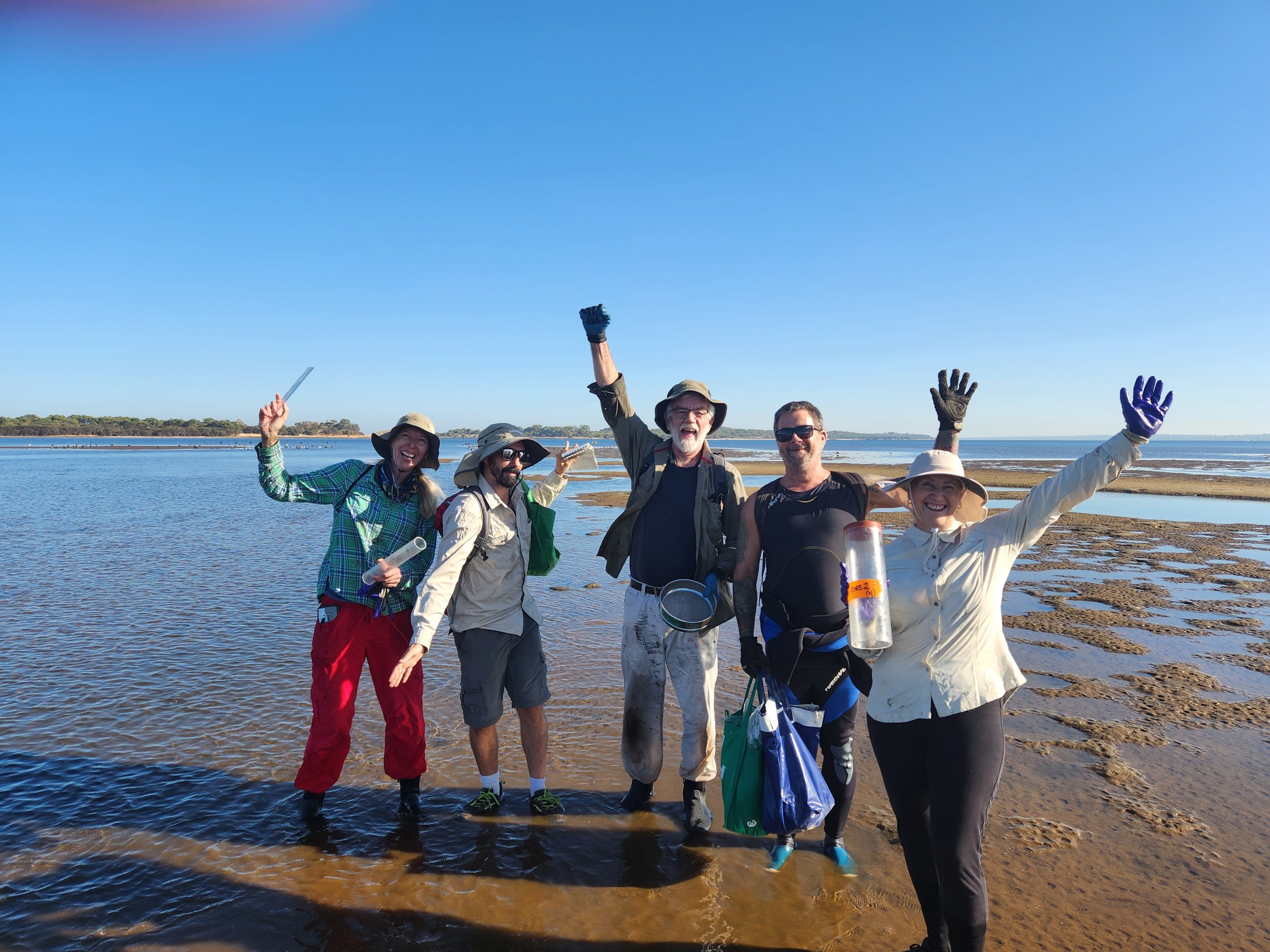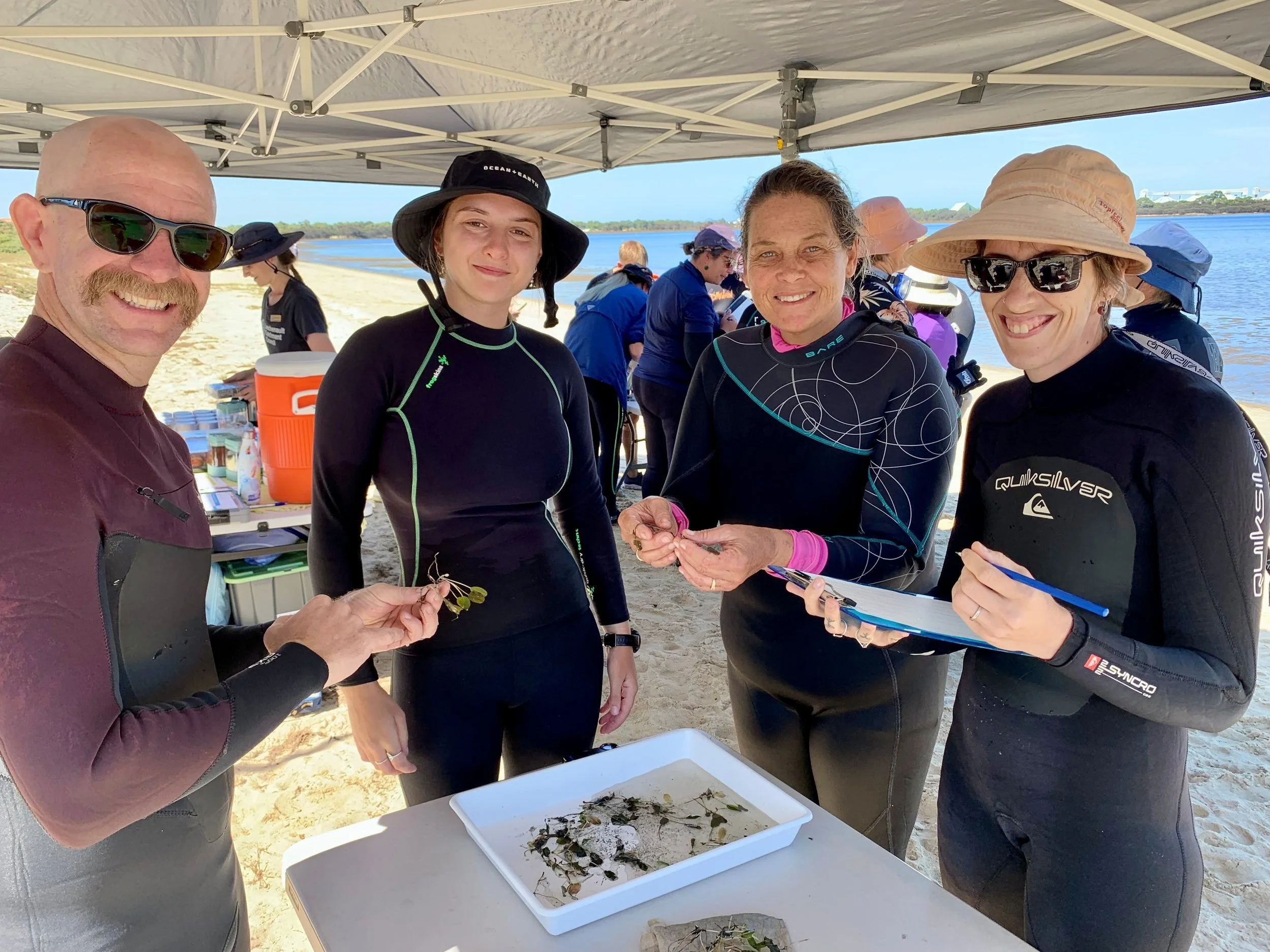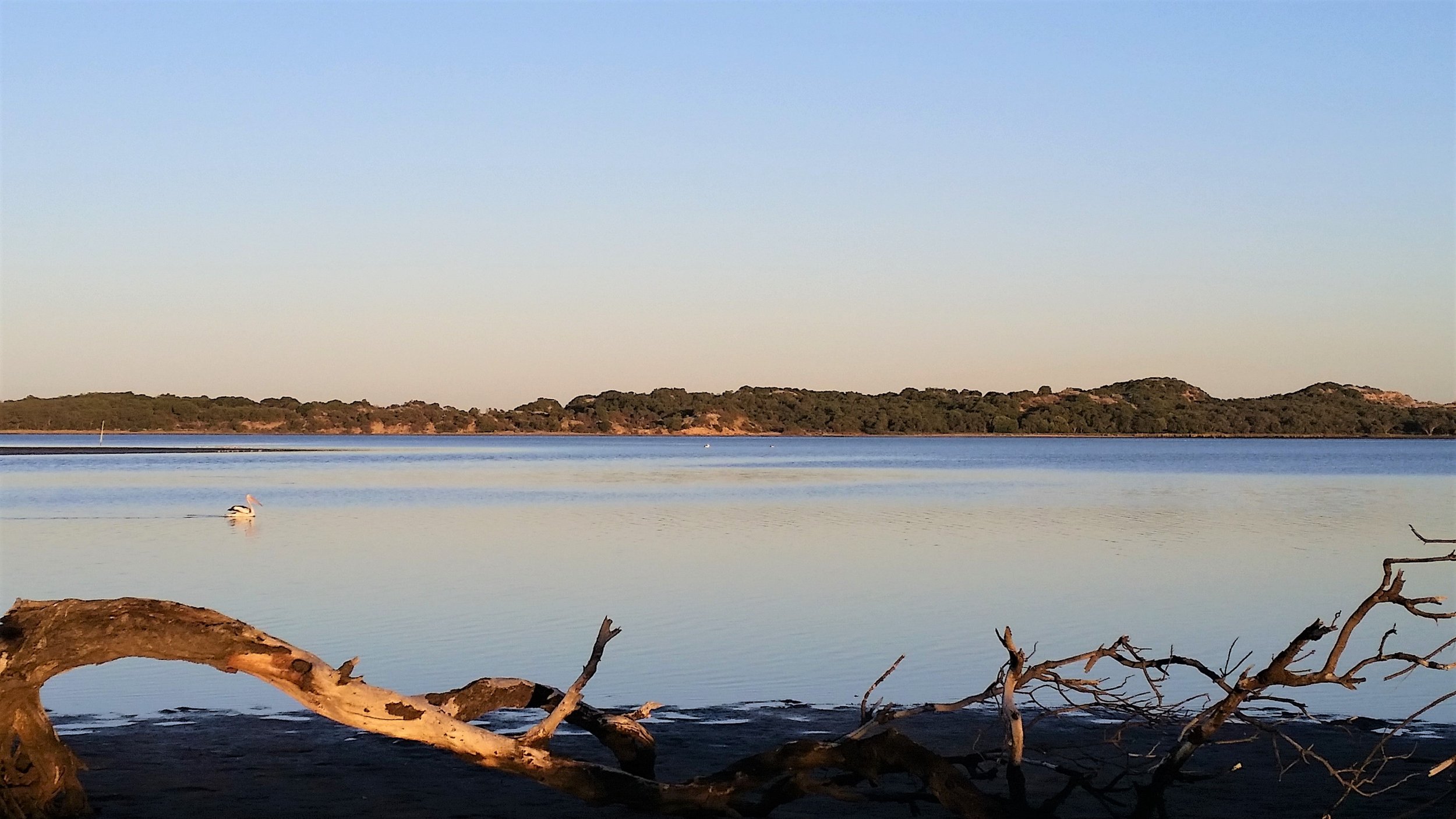
Estuary citizen science programs
Citizen science adds value to traditional scientific research and engages community in a meaningful way. Through this program we are embedding citizen science opportunities into our research activities. The Leschenault Estuary Connect program will continue to engage community to be part of citizen science opportunities as they arise.
Migratory Shorebird Food Monitoring Program
A fantastic citizen science project that has been empowering the local community since 2020. Initially funded by Tronox, the project took a brief pause in 2023 but made a strong comeback in 2024 under the Estuary Connect Program.
Each year, enthusiastic community members roll up their sleeves in January and February to collect sediment samples from the Leschenault Estuary. These samples are then taken to Edith Cowan University (ECU), where volunteers help sort through them in search of macroinvertebrates—the vital food source for migratory shorebirds.
Researchers at ECU identify the collected species, and the findings are shared at an annual community information session. The data helps track the health of the estuary's ecosystem and supports the incredible journey of shorebirds, which arrive in the estuary each September to feed and restore energy before their long migration north to breed. This hands-on program is a rewarding way for locals to connect with nature and contribute to important conservation science.
Seagrass for swimmers
Launched in 2024, this project is an exciting collaboration between the Leschenault Catchment Council, OzFish, the Department of Water and Environmental Regulation, and researchers from the University of Western Australia.
This groundbreaking project is the first of its kind to trial restoration methods for Halophila ovalis—commonly known as paddle weed—a key seagrass species in the Leschenault Estuary. Community members play a vital role by collecting seagrass fruit, which is then studied by researchers to determine successful germination techniques.
Once viable methods are established, volunteers join project staff in testing different ways to replant the germinated seagrass back into the estuary. With H. ovalis being one of only three seagrass species in the estuary—and following a major loss of seagrass over a decade ago—this restoration work is critical.
Seagrass meadows are vital to the health of the estuary: they provide habitat and food for marine life, improve water quality, store carbon, and release oxygen. This project offers a unique opportunity for the community to dive into hands-on restoration efforts and help bring life back to this essential underwater ecosystem.
Keep an eye on our events page to get involved in the next citizen science activity.
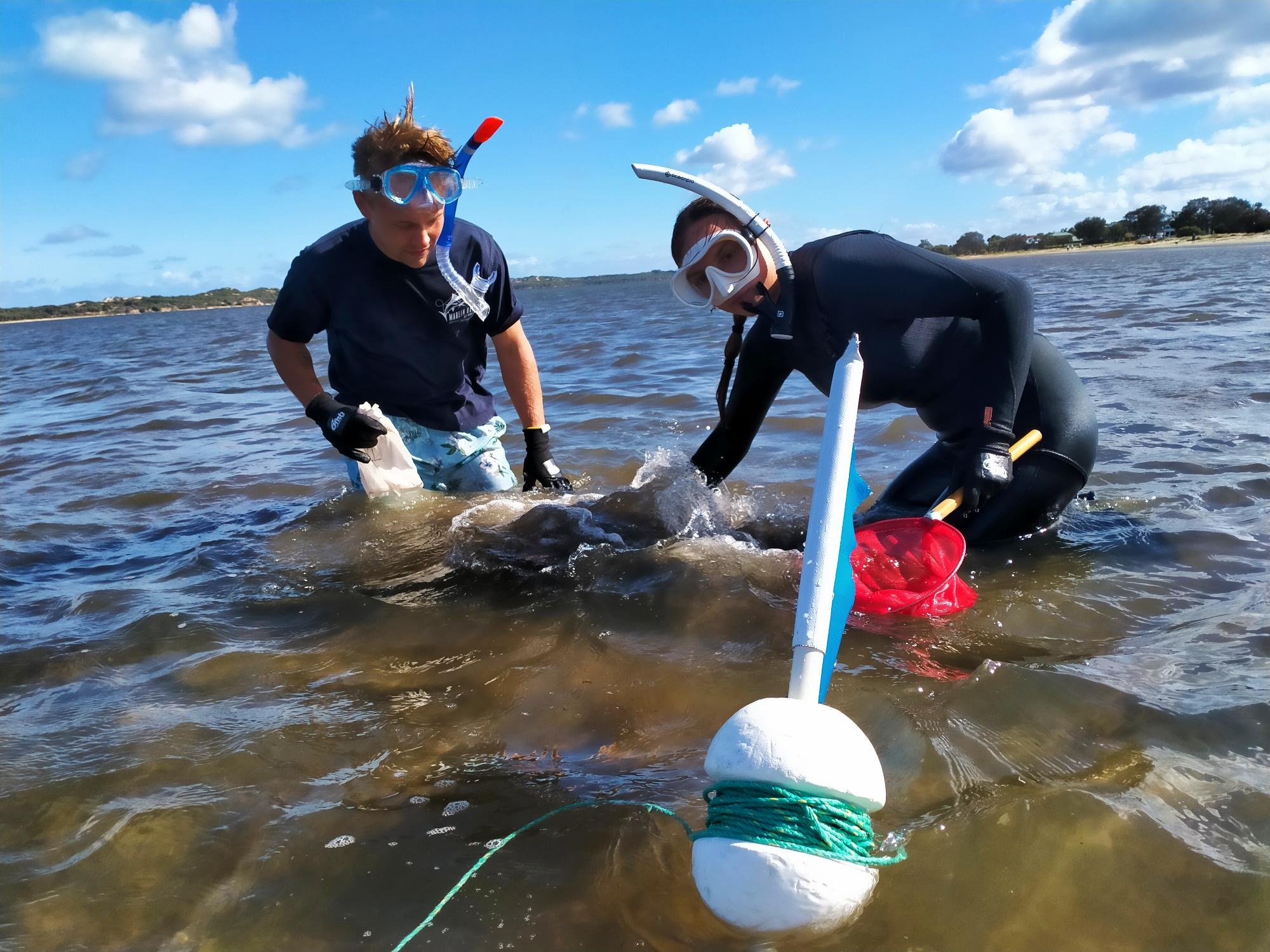
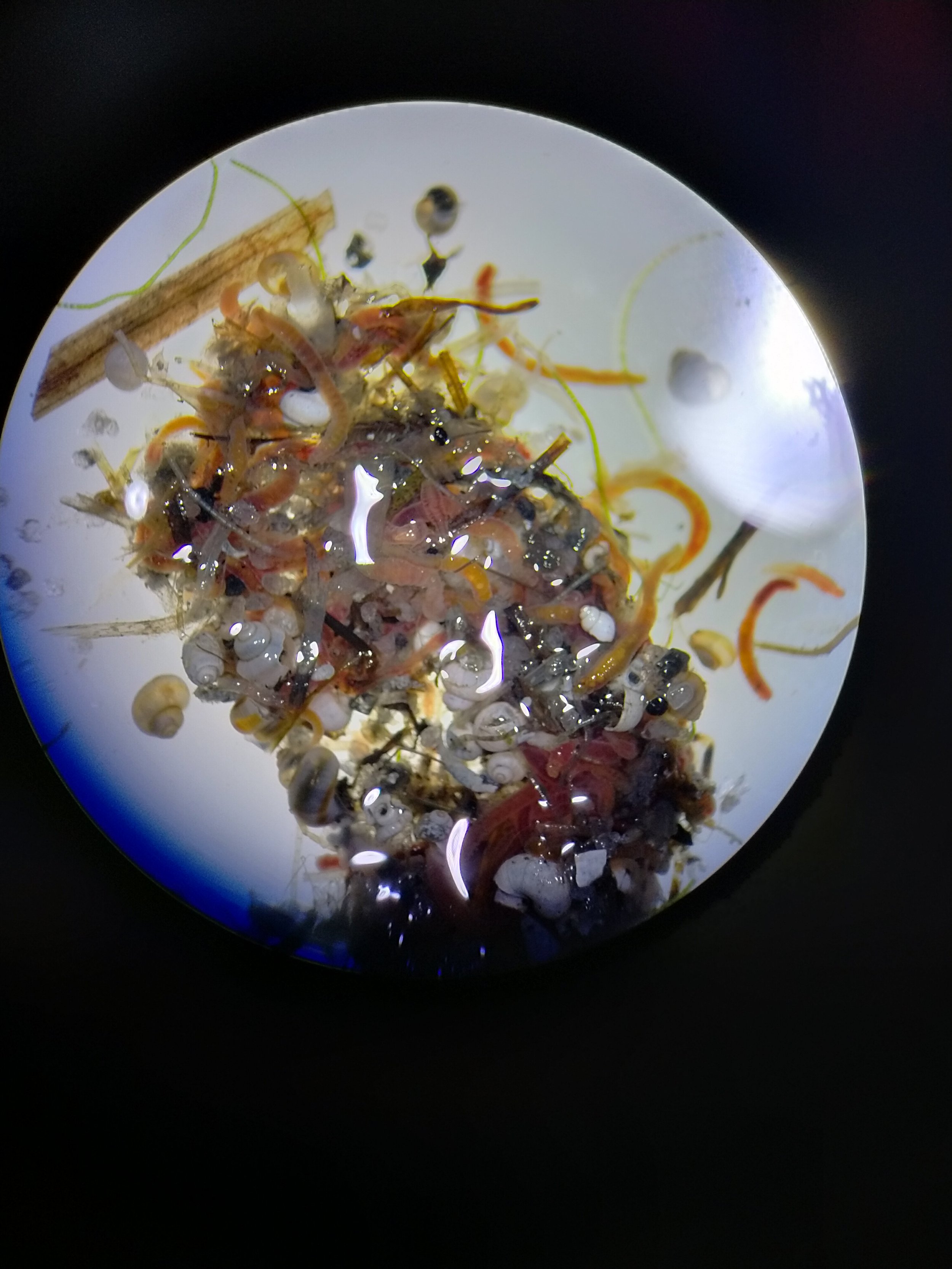


This program is made possible through generous funding support from Lotterywest, helping to build a better WA together, and Water Corporation.

